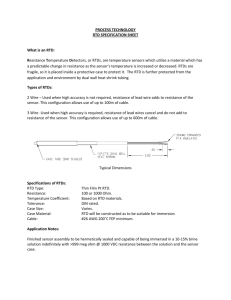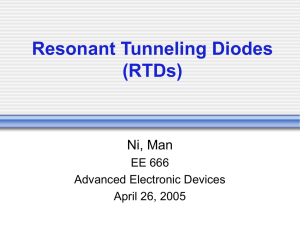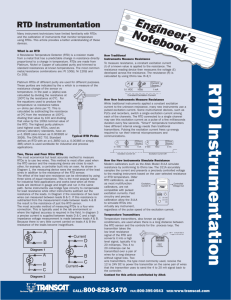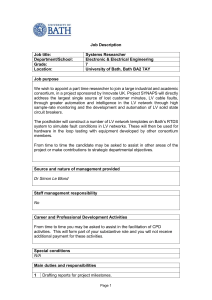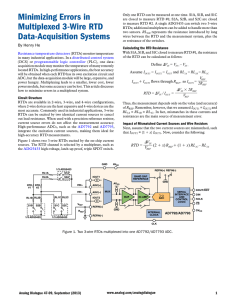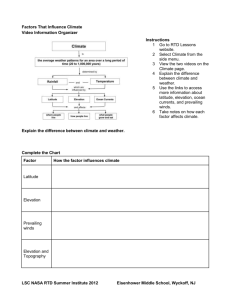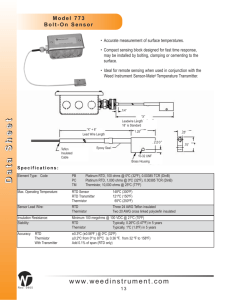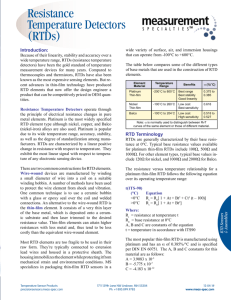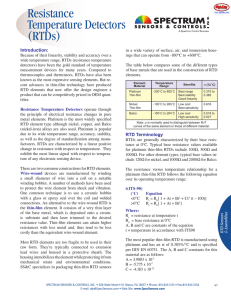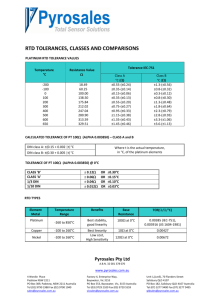Ap Note 605 - What is an RTD
advertisement
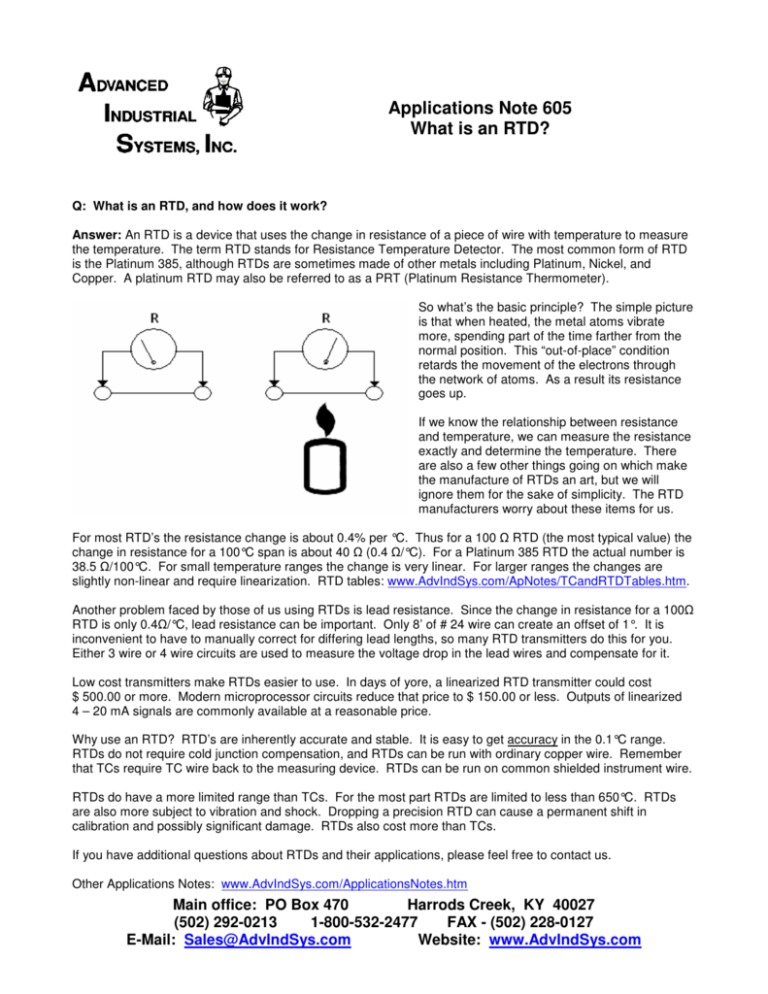
Applications Note 605 What is an RTD? Q: What is an RTD, and how does it work? Answer: An RTD is a device that uses the change in resistance of a piece of wire with temperature to measure the temperature. The term RTD stands for Resistance Temperature Detector. The most common form of RTD is the Platinum 385, although RTDs are sometimes made of other metals including Platinum, Nickel, and Copper. A platinum RTD may also be referred to as a PRT (Platinum Resistance Thermometer). So what’s the basic principle? The simple picture is that when heated, the metal atoms vibrate more, spending part of the time farther from the normal position. This “out-of-place” condition retards the movement of the electrons through the network of atoms. As a result its resistance goes up. If we know the relationship between resistance and temperature, we can measure the resistance exactly and determine the temperature. There are also a few other things going on which make the manufacture of RTDs an art, but we will ignore them for the sake of simplicity. The RTD manufacturers worry about these items for us. For most RTD’s the resistance change is about 0.4% per °C. Thus for a 100 RTD (the most typical value) the change in resistance for a 100°C span is about 40 (0.4 /°C). For a Platinum 385 RTD the actual number is 38.5 /100°C. For small temperature ranges the change is very linear. For larger ranges the changes are slightly non-linear and require linearization. RTD tables: www.AdvIndSys.com/ApNotes/TCandRTDTables.htm. Another problem faced by those of us using RTDs is lead resistance. Since the change in resistance for a 100 RTD is only 0.4 /°C, lead resistance can be important. Only 8’ of # 24 wire can create an offset of 1°. It is inconvenient to have to manually correct for differing lead lengths, so many RTD transmitters do this for you. Either 3 wire or 4 wire circuits are used to measure the voltage drop in the lead wires and compensate for it. Low cost transmitters make RTDs easier to use. In days of yore, a linearized RTD transmitter could cost $ 500.00 or more. Modern microprocessor circuits reduce that price to $ 150.00 or less. Outputs of linearized 4 – 20 mA signals are commonly available at a reasonable price. Why use an RTD? RTD’s are inherently accurate and stable. It is easy to get accuracy in the 0.1°C range. RTDs do not require cold junction compensation, and RTDs can be run with ordinary copper wire. Remember that TCs require TC wire back to the measuring device. RTDs can be run on common shielded instrument wire. RTDs do have a more limited range than TCs. For the most part RTDs are limited to less than 650°C. RTDs are also more subject to vibration and shock. Dropping a precision RTD can cause a permanent shift in calibration and possibly significant damage. RTDs also cost more than TCs. If you have additional questions about RTDs and their applications, please feel free to contact us. Other Applications Notes: www.AdvIndSys.com/ApplicationsNotes.htm Main office: PO Box 470 Harrods Creek, KY 40027 (502) 292-0213 1-800-532-2477 FAX - (502) 228-0127 E-Mail: Sales@AdvIndSys.com Website: www.AdvIndSys.com
